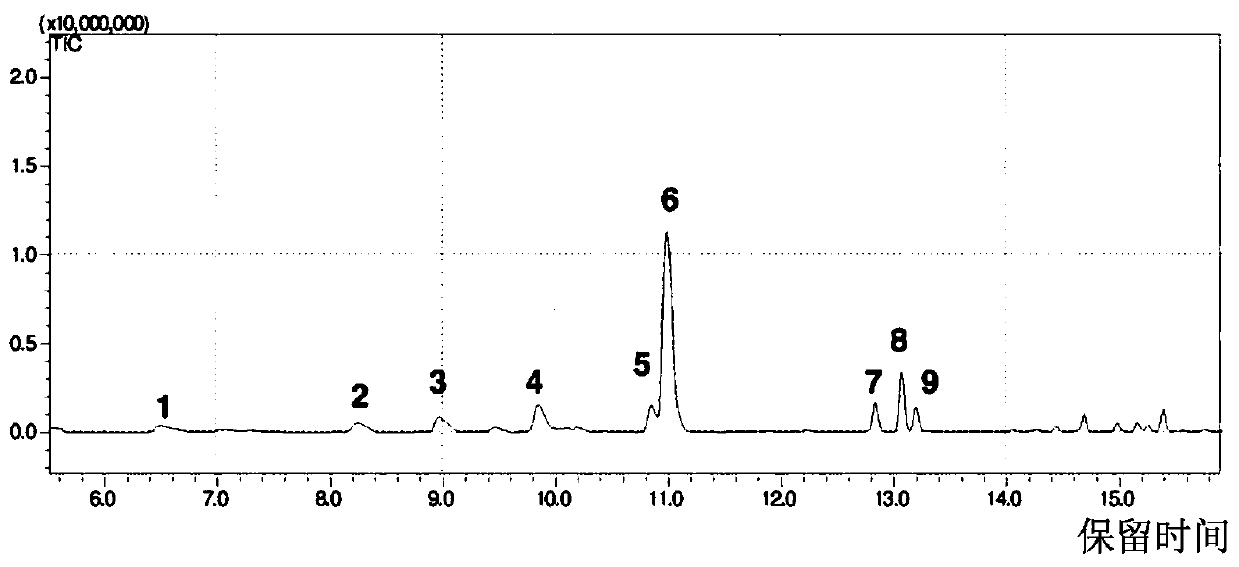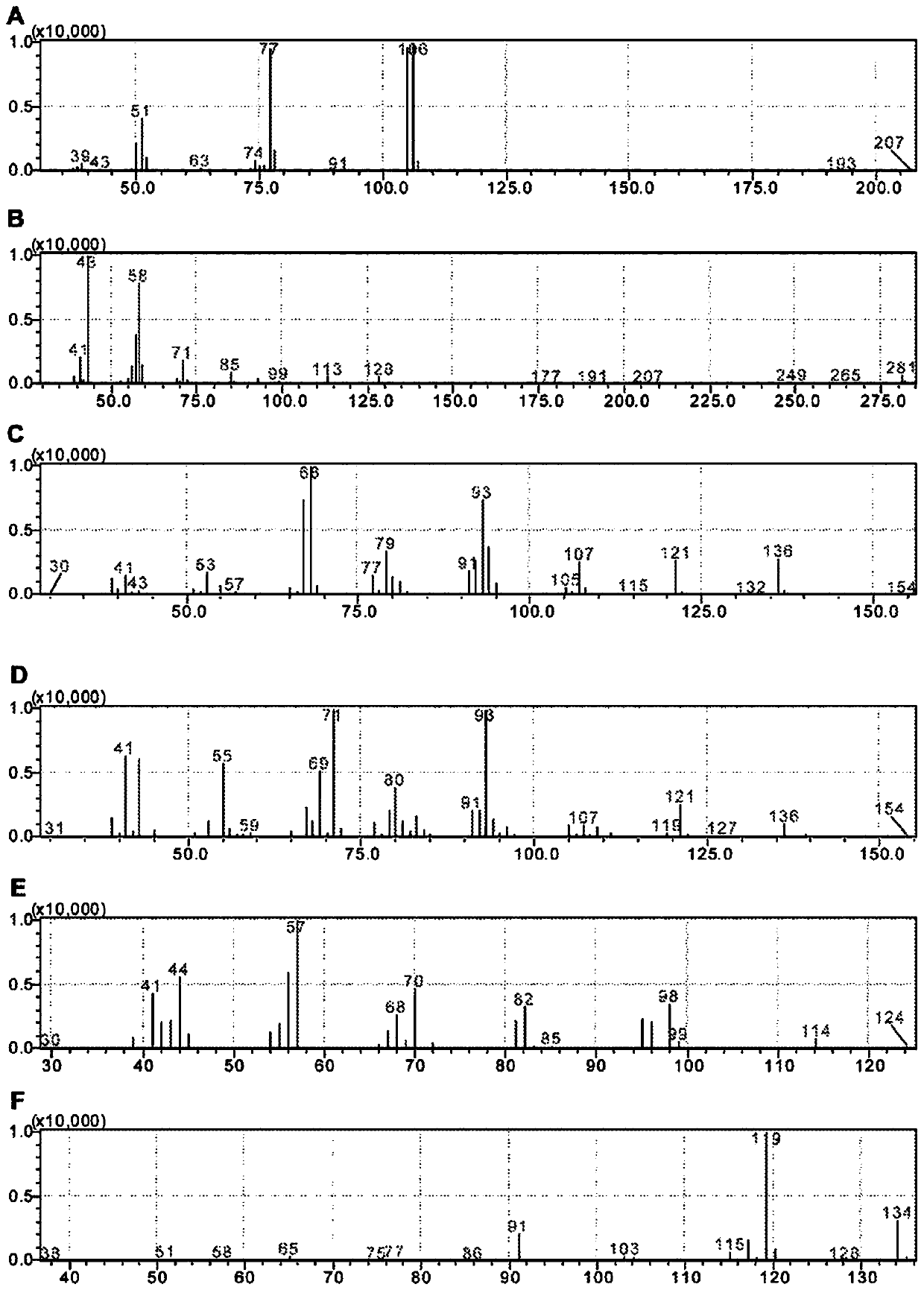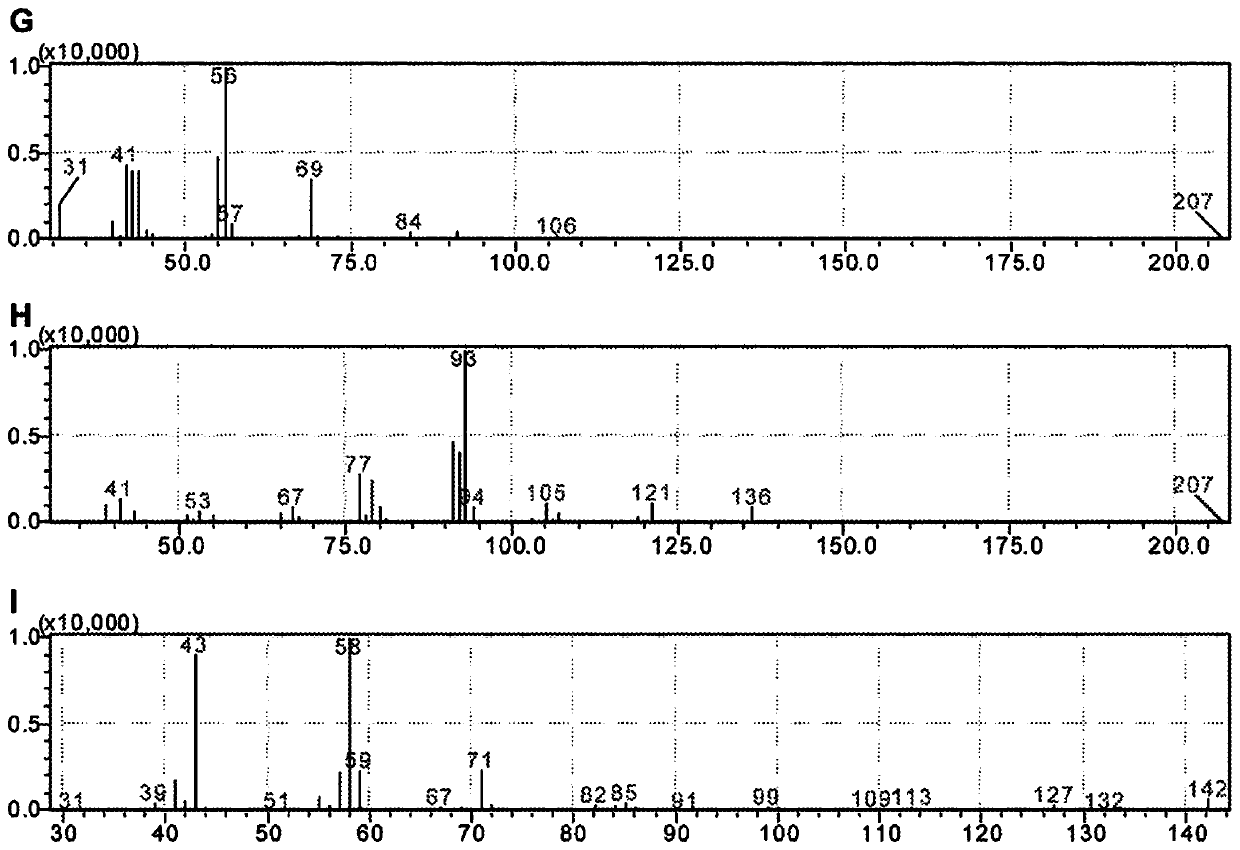Formulation for promoting targeted pollination of almond tree crops in honey bees
An almond tree and preparation technology, which is applied in the directions of animal repellents, plant growth regulators, biocides, etc., can solve the problems that cannot be used to promote pollination of almond tree crops.
- Summary
- Abstract
- Description
- Claims
- Application Information
AI Technical Summary
Problems solved by technology
Method used
Image
Examples
Embodiment 1
[0059] Example 1: Identification and Quantification of Volatile Compounds in Almond Flowers
[0060] To identify and quantify the volatile compounds present in almond blossoms, the following protocol was used:
[0061] Choose an almond tree branch that has 20-30 flowers in the following stages: "buds" and "day-old flowers." Using a polyethylene bag, the branch was mixed with exposed SPME fibers (solid phase microextraction) (PDMS type, ) together to collect the volatiles present in the flowers for a duration of 2 hours. Then, the fibers were desorbed in a Shimadzu QP-2010GC-MS device under the following conditions: splitless mode, helium as the carrier gas, injector temperature of 250 °C, and interphase temperature of 310 °C. The temperature ramp used was: 40(1)-5-200-15-300(1); Column: AT-5 (diameter=0.25mm, length=30m, membrane=0.25mm, flow rate=1ml / min ).
[0062] For later assay analysis and identification of this compound, the NIST05, NIST08 and SHIM2205 libraries ...
Embodiment 2
[0065] Embodiment 2: the preparation of preparation
[0066] Three different mixtures were prepared, each mixing 3 to 4 of the volatile compounds identified in Example 1. The composition of each mixture is:
[0067] - Mixture I: 50% limonene, 30% linalool, 10% benzaldehyde, 10% nonanal.
[0068] - Mixture II: 50% limonene, 30% linalool, 10% benzaldehyde and 10% 2-octanone.
[0069] - Mixture III (formulation according to the invention): 55% limonene, 30% linalool and 15% benzaldehyde.
[0070] In all cases, pure compounds with a purity greater than 95% were used Solutions were prepared by mixing the compounds without solvent at room temperature. Once prepared, the mixtures were used immediately in the experiment and stored at 2°C-8°C until the end of the experiment (4 days).
Embodiment 3
[0071] Example 3: Evaluation of mixtures by differential olfactory conditioning
[0072] Differential olfactory conditioning was performed to assess the ability of bees to discriminate between various scents and almond native floral odors. For each scent, 32 to 46 bees were used. Each bee used in the experiment was harnessed and provided with a reward-associated scent (reward conditioned stimulus, EC+) and also with almond natural flower scent without reward (no reward condition stimulation, EC-). Both stimuli were presented to the bees via a device that delivered the scent through a continuous air stream. Filter paper (30mm x 3mm) was impregnated with each mixture (4 μl) and introduced into the syringe. On the other hand, fresh flowers from almond trees were placed in a Buchner flask (500 ml) connected to the apparatus by a cannula. This conditioning was repeated 4 times with a 15 min interval between each pair of scent presentations, in pseudo-random order. The fragra...
PUM
 Login to View More
Login to View More Abstract
Description
Claims
Application Information
 Login to View More
Login to View More - R&D
- Intellectual Property
- Life Sciences
- Materials
- Tech Scout
- Unparalleled Data Quality
- Higher Quality Content
- 60% Fewer Hallucinations
Browse by: Latest US Patents, China's latest patents, Technical Efficacy Thesaurus, Application Domain, Technology Topic, Popular Technical Reports.
© 2025 PatSnap. All rights reserved.Legal|Privacy policy|Modern Slavery Act Transparency Statement|Sitemap|About US| Contact US: help@patsnap.com



